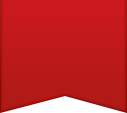Criminology, like sociology and despite its grand, Greek suffix, is a rag-bag of different approaches, few of which would pass muster in the natural sciences like physics or biology.
The term appears to have been used first in the late nineteenth century (in 1885 there was a book called Criminology by Raffaele Garofalo)
Some ascribe the word criminology to the prodigious English writer Havelock Ellis, whose first main publication, in 1890, was called The Criminal. He went on to become controversial for books about homosexuality and eugenics, both of which he rather approved of.
![]()
Physiognomists studied corpses and claimed convicts were ‘shifty-eyed’ and had distinctive facial features. The trouble was, different physiognomists could not agree. Some said criminals had small noses, fleshy lips, small ears and weak chins; others that they had arrogant noses, narrow lips, protruding ears and bushy eyebrows. Phrenologists were more interested in the skull and they insisted that various shapes and bumps on the head indicated abilities and even moralities.

From New Physiognomy or Signs of Character, 1871
Crime is sometimes linked to brain damage but it is extremely unlikely that normal brains have ‘crime areas’ as they do for speech or vision.
![]()
Goring matched 3,000 English prisoners with thousands of soldiers
Matching soldiers with prisoners may not be an ideal comparison, but you get the point.
![]()
Durkheim was brilliant, highly politicised, socialist and (though secular) Jewish, and at odds with the dutiful Catholic nationalism which dominated France after the Franco-Prussian war. In 1895 he published a manifesto for sociology called Rules of the Sociological Method
Durkheim, Emile, Rules of Sociological Method, (1895) The Free Press, 1982, ISBN 0029079403.
![]()
If the anthropologists saw crime as the inevitable outcome of genes, Durkheim saw it as the inevitable outcome of people’s roles in society. Remember, this was a time of entrenched class divisions when many middle-class commentators, including Charles Dickens (1812–70) and Henry Mayhew (1812–87), had long expressed concern at harsh conditions suffered by the poor.
Henry Mayhew was a journalist (one of the founders of the Victorian satirical magazine Punch) who was commissioned by the Morning Chronicle to investigate the poor of London, and went on to write specifically about crime. He was the first person known to have tried to map crime hot-spots and correlate crime with other factors, such as ‘ignorance’ (illiteracy).
![]()
Durkheim’s analysis was ground-breaking and hugely influential, and it was his sociological (not to say socialist) approach that so dominated criminology during its explosive growth in the latter part of the twentieth century. In the US it was taken up by people like Edwin H. Sutherland (1893–1950), whose formidable 1924 text, Criminology, asserted the importance of social standing, class and social disorganisation.
It was Sutherland who in 1939 coined the term ‘white-collar criminal’.
![]()
The first university lectures in criminology were to medical students in 1921; it was a doctor, Hamblin Smith, who seems to have been the first Briton to call himself a criminologist; and interest was driven by forensic psychiatry and educational psychology. But theory and politics began to swamp the infant discipline, as it had done in the USA.
The University of Chicago had established America’s first sociology department in 1892 and set the trend for sociology’s dominance of thinking about crime. Pioneered by Berkley in the 1920s, some universities broadened the curriculum to incorporate teaching about law and ethics, describing their courses as Criminal Justice Studies. It was not until 2003 that the first criminology department opened in an Ivy League university in the United States. In the UK the Home Office helped set up the Institute of Criminology at Cambridge in 1960 in the hope of guiding it on penal policy, but almost all other academic courses in criminology have been spawned by sociology. The Jill Dando Institute of Crime Science at University College London is probably the only school accredited outside laws or sociology (we placed it in an Engineering Faculty to emphasise the break with tradition), and a sibling Design Against Crime Research centre was established at Central Saint Martin’s College of Art and Design.
![]()
In 1967 a Chicago sociologist, Howard Becker, delivered a call to arms claiming criminology had to take sides with the underdog,1 prompting an influential response from a colleague, Alvin Gouldner, who insisted the question was not whose side social scientists should be on but how they should take up the battle.2
1Howard Becker, ‘Whose side are we on?’ Social Problems, 1967 Vol. 14, pp. 239–47.
2 Alvin Gouldner, ‘The sociologist as partisan: sociology and the welfare state’, The American Sociologist,1968, Vol. 3, No. 2, pp. 103–16.
![]()



